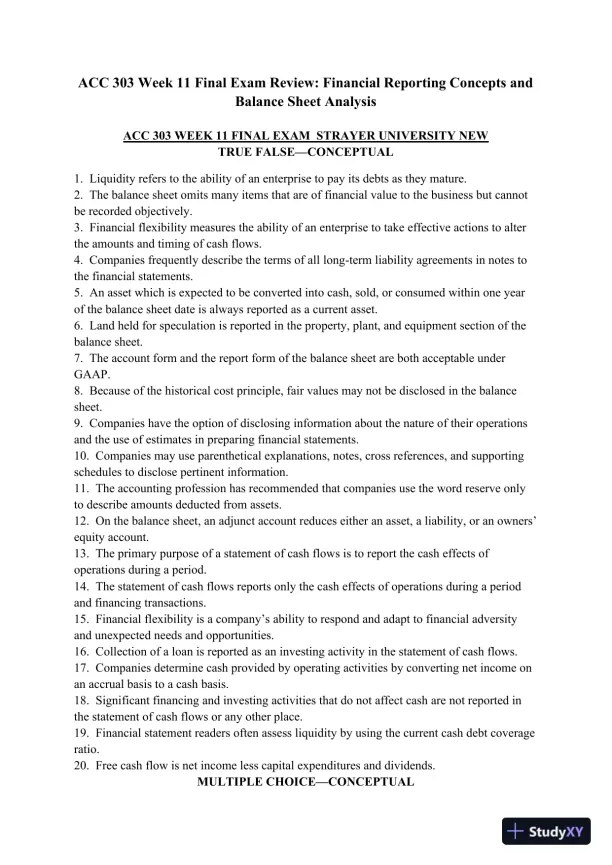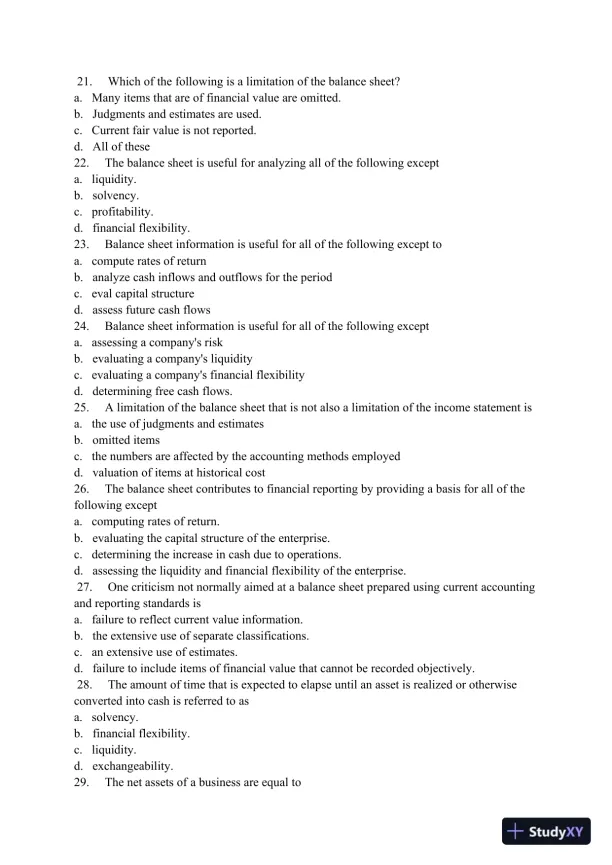Page 1

Loading page image...
Page 2

Loading page image...
Page 3

Loading page image...
Final exam review covering financial reporting and balance sheets.
Loading page image...
Loading page image...
Loading page image...
This document has 9 pages. Sign in to access the full document!